How to Make a Simple Pan Sauce at Home
“If you want to elevate your cooking skills to a new level and up your culinary game, learn how to make a simple pan sauce.”
Pan sauces are a culinary marvel, transforming simple ingredients and the fond left behind from searing meats into flavorful masterpieces. These sauces elevate dishes by adding complexity, depth, and richness, making them a staple in the repertoire of any proficient chef or home cook.
Creating a pan sauce begins with cooking proteins like chicken, beef, or fish in a skillet or sauté pan. As the meat cooks, flavorful browned bits, known as fond, develop on the bottom of the pan. These caramelized remnants are the key to a delicious pan sauce.
Once the meat is cooked to perfection, it’s removed from the pan, and aromatics such as onions, garlic, and herbs are often added to infuse additional flavor. These aromatics are sautéed until softened, releasing their essence into the pan. Then, a liquid such as broth, wine, or cream is poured into the pan, deglazing it and loosening the fond from the bottom.
As the liquid simmers and reduces, it absorbs the flavors of the aromatics and fond, creating a rich and flavorful sauce. To enhance the texture and richness of the sauce, butter or cream is often whisked in just before serving, adding a luxurious finish.
They Make You a Better Cook
The versatility of pan sauces is one of their greatest assets. They can be tailored to complement various dishes, from simple weeknight meals to elegant dinner party fare.
For example, a classic pan sauce made with shallots, white wine, and butter pairs beautifully with delicate fish like sole or halibut, while a hearty red wine reduction complements the bold flavors of a perfectly seared steak.
Pan sauces also offer endless opportunities for creativity and experimentation. Home cooks can customize their sauces by incorporating different herbs, spices, and liquids to suit their tastes and preferences. Additionally, pan sauces can be thickened with various agents, such as flour, cornstarch, or reductions, allowing for endless possibilities in texture and consistency.
Pan sauces are a culinary essential, elevating dishes with their depth of flavor and versatility. Whether you’re a seasoned chef or a novice cook, mastering the art of pan sauces will undoubtedly take your cooking to new heights.
Pan Sauces History
It’s difficult to attribute the invention of pan sauces to a single individual, as they have been a fundamental element of cooking for centuries and are prevalent in various culinary traditions worldwide. However, the French culinary tradition has certainly played a significant role in popularizing and refining the techniques used to create pan sauces.
French chefs, such as Auguste Escoffier and Antonin Carême, are renowned for their contributions to modern culinary techniques, including the development of sauces. The French “mother sauces,” a set of foundational sauces from which many other sauces are derived, include several that can be adapted into pan sauces, such as hollandaise, velouté, and béchamel.
Furthermore, the concept of deglazing a pan to create a sauce likely has roots in ancient cooking practices, where cooks would have utilized whatever ingredients were available to them to enhance the flavor of their dishes. While specific individuals may not be credited with inventing pan sauces, chefs throughout history have refined and perfected the techniques involved, contributing to the rich culinary tradition we enjoy today.
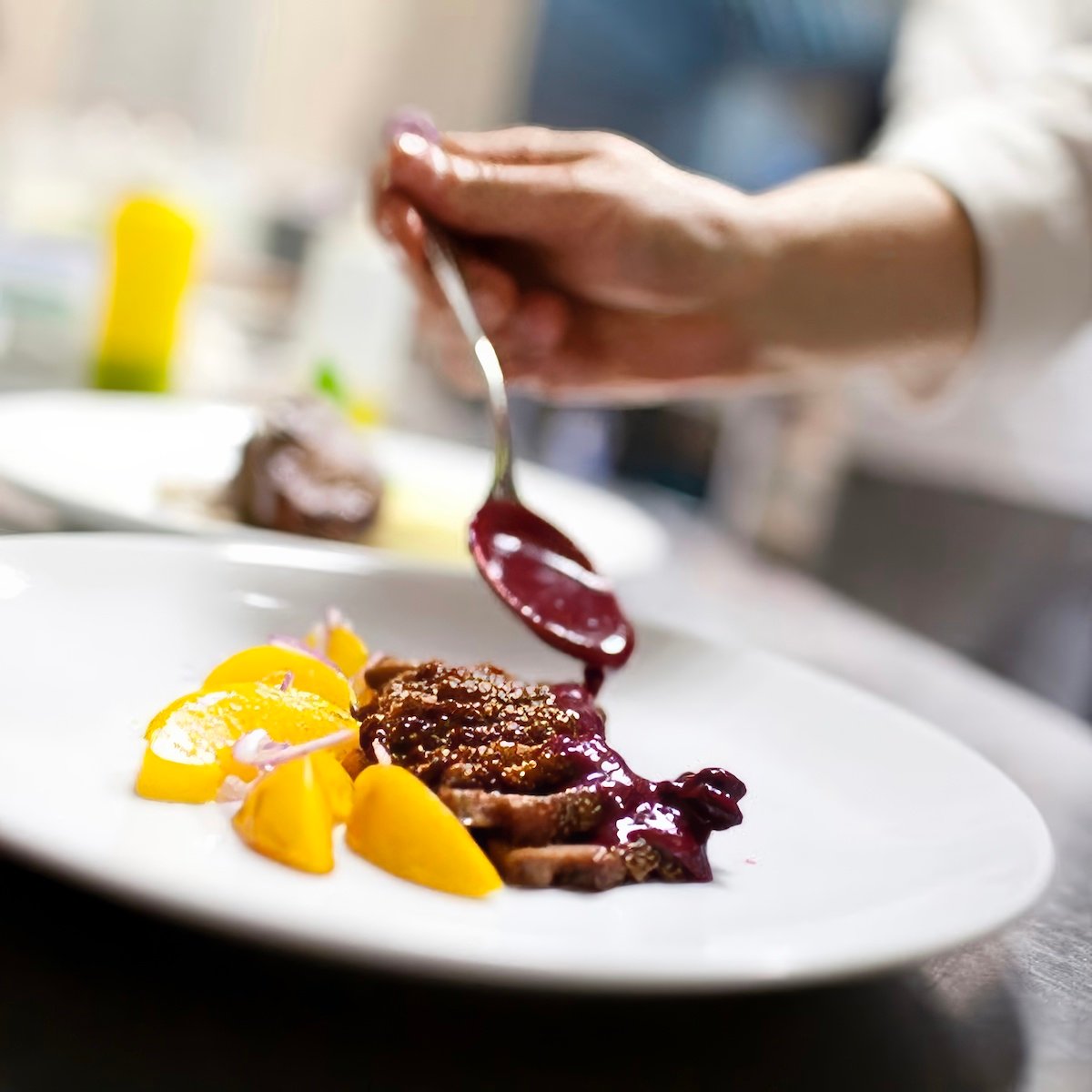
The Pros Use This Technique
Restaurant chefs use this technique all the time. They cook something. Usually, a protein, like meat or fish, is in a sauté pan over pretty high heat until it’s done and leaves a bunch of brown caramelized bits of “stuff” in the pan.
You look at this “stuff” in the pan and say, “Now how am I going to clean this ‘stuff’ off the pan? What a mess! I wish I used a nonstick pan.”
Before you reach for your green scrubby pad, keep reading.
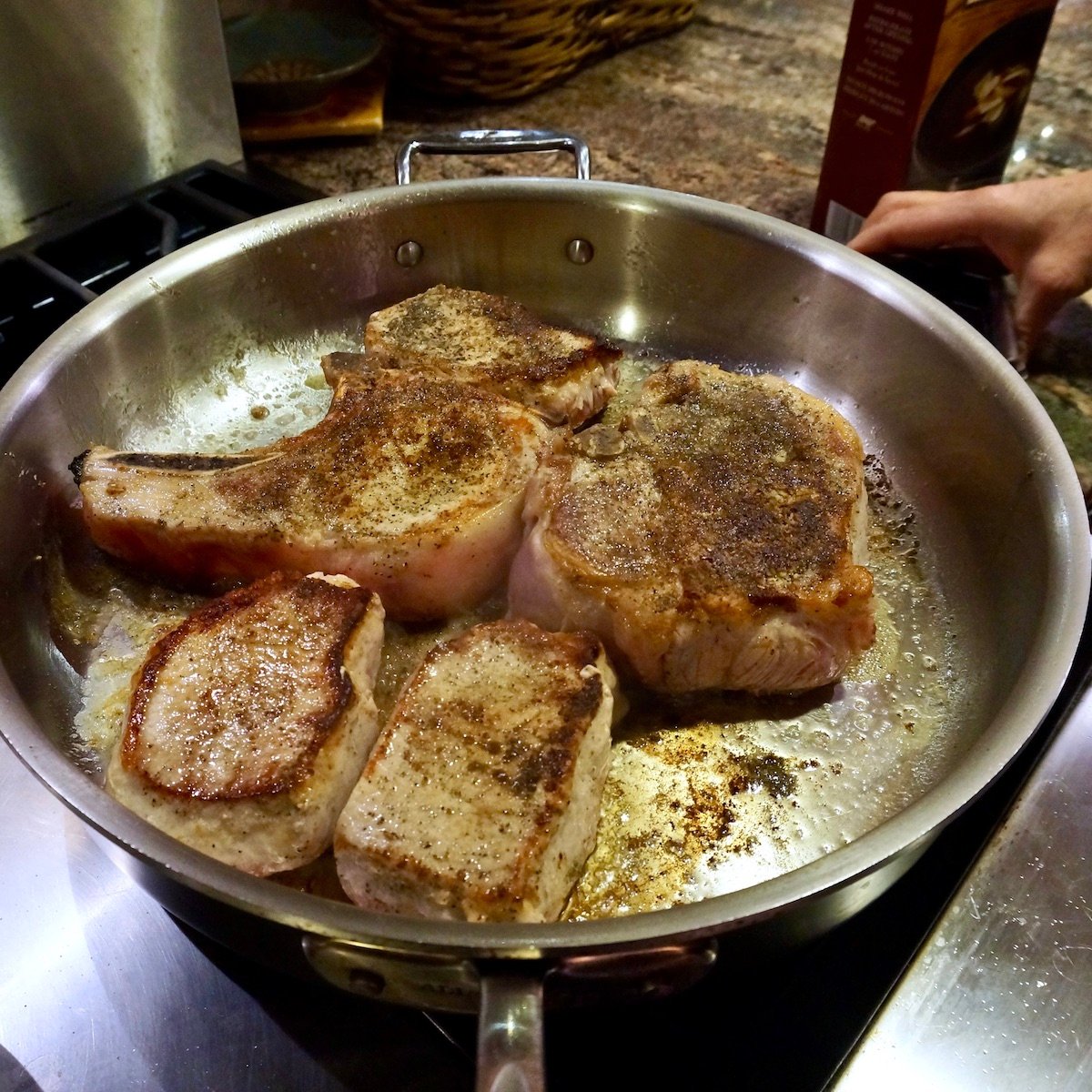
Fond – What Is It? – What Is It Good For?
The “stuff” has a name. Well, it has two names. First, most people call it “sucs,” which comes from the French word sucre or sugar. This is because bits of caramelized sugars, proteins, and carbohydrates, and some rendered fats are left in the pan. In America, we sometimes call this “stuff” fond, which is the French word for “base” or “foundation.”
The sauce made after deglazing the sucs with some form of liquid to help loosen it up is fond everywhere else. So what I call a pan sauce, others would call fond, but I’m going to have to work at it to remember to call it sucs because I’ve been calling it fond for 20 years.
Whether you call it fond or sucs, you should be thrilled when this stuff is stuck to your saute pan because it is packed with incredible flavors. If you worry about how difficult it will be to clean the pan, forget about it.
A little wine, stock, or even water and a wooden spoon can scrape it right off the bottom of the pan and make an incredible sauce. This is called deglazing and can be done with wine, brandy, fortified wines, stock, cider, fruit juices, or, most typically, a combination of two. Be careful if you use wine to remove the pan from the heat so the alcohol doesn’t ignite and blow up in your face. I’ve spoken with chefs who have seen this happen.
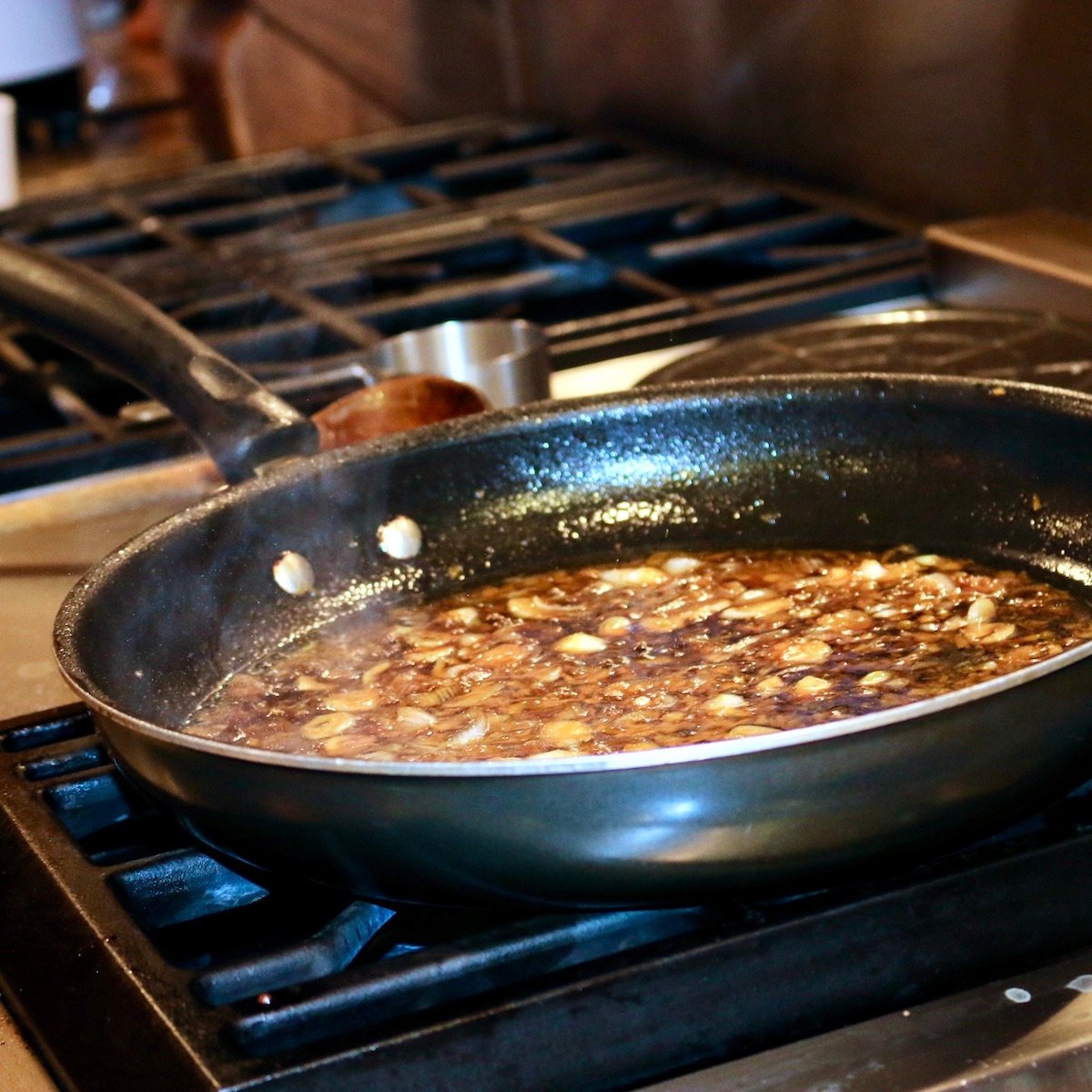
Reduce the Liquids
The following steps are to reduce the liquid in the pan and add several pats of butter to thicken and enhance the sauce’s flavor. You would be amazed if you knew how much butter professional chefs use in restaurants to “enhance” flavor.
I sometimes think they make their dishes too rich because I can feel it when I get home, but it’s so good when you eat it. It makes sense, though. Fats give foods a fantastic body and carry a lot of flavors.
Aromatics
Now, those are just the basics. To create more complexity to the sauce, you’ll want to add some aromatics like garlic or shallots for a subtle but additional layer of flavor.
Then, add additional ingredients such as mushrooms, mustard, chutneys, herbs, and/or spices to give even more complexity and flavor.
This is how many classic sauces with all the fancy French names are made. However, adding different ingredients to stock reductions can create the same sauces at home.
Depending on the level you want to take it to, it can be quick and easy or a little more time-consuming and complex. But no matter what you decide, you will have a more incredible, flavorful, delicious result than if you didn’t make the sauce.
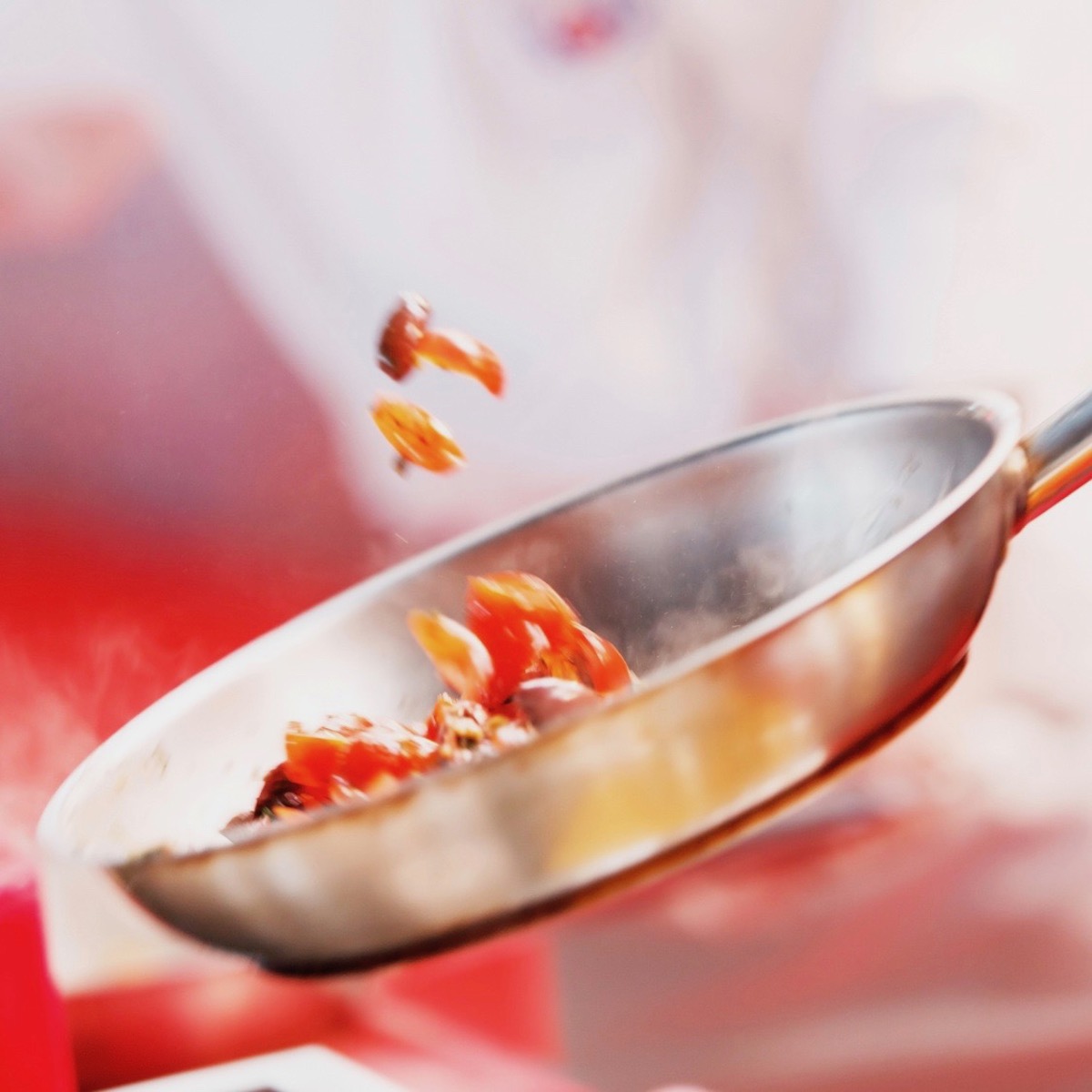
The Right Pan
As mentioned above, you want the caramelized brown “stuff” to stick to the pan. So, using a pan with a nonstick surface wouldn’t make any sense. But, of course, that only defeats the goal of creating that wonderfully flavored fond.
I have also read that you should avoid cast iron pans because the iron reacts to food high in acid, like red wine, and gives off a metallic taste. Although I love cooking foods in my cast iron skillet, stay away if you plan to make a pan sauce.
Therefore, the best pan for sautéing and making a pan sauce would be a heavy-bottomed, nonreactive sauté pan. I like Caphalon pans, but there are many good ones, including All-Clad and Viking.
Check out How to Choose a Good Saute Pan to learn more about them and what’s available.
What About the Size of the Pan?
Whenever you are sautéing anything, you want to ensure you give the meat, chicken, or fish enough room in the pan to allow it to sear and prevent steaming. The rule of thumb is to leave at least 1/4 to 1/2 inch between pieces.
On the other hand, you want a pan that’s manageable, or the ingredients tend to burn.
I have a 10-inch, 3-quart Caphalon sauté pan that works great for my family’s cooking.
Stock Reductions
Another challenge you will face as a home cook is finding a good stock to make the sauces. Unfortunately, the canned beef stock or chicken stock you find in your grocery store doesn’t cut it.
Nor do the powdered products you find all over your supermarket shelves that are nothing more than powdered cornstarch and salt. And please don’t even think about using a bouillon cube.
Check out my article called Making Incredible Sauces At Home, where I list some ways to obtain good quality stock and stock reductions. Also, check out my stock reductions, where I list the best sources for quality reductions, including demi glace, lobster stock, lamb stock, etc.
Sautéing
An essential technique for making quick and delicious pan sauces is sautéing. In my opinion, it all starts there.
Please check my How to Sauté page to explore how to sauté correctly. Once you learn how to sauté, you can cook meat, fish, and chicken to perfection and make delicious pan sauces to go with them.
Depending on how much time you have on your hands or how involved you want to get, you can make a quick, simple pan sauce or a classic pan sauce with all the additional layers of flavor.
How Much Liquid?
Most of the time, I start with half a cup of wine and half a cup of stock and reduce them by half. That’s a general rule of thumb because I want the desired thickness when the sauce is done.
A better gauge to tell when the sauce is thick enough is when it coats a metal spoon. I love cooking with wooden spoons, but you want to use a metal spoon.
The reduction ratio will differ depending on the other ingredients you add to the sauce, including butter, mushrooms, cream, etc. As always, it just takes a little practice in cooking, and you will get comfortable with your amounts.
It also pays to remember that if you cook for your family, you must cook to their taste. Since nobody knows your family’s taste better than you, you control how much you reduce your sauce. The more you reduce a sauce, the more intense it will be. You are in the driver’s seat.
Use a Wooden Spoon
Using a wooden spoon instead of a metal spoon when deglazing a pan or making a sauce serves several purposes:
- Gentle scraping: Wooden spoons have a softer edge compared to metal spoons, which helps prevent scratching or damaging the pan’s surface, particularly if it has a non-stick coating or is made of delicate materials like copper.
- Avoiding metallic taste: Metal spoons, especially those made of reactive metals like aluminum or copper, can sometimes impart a metallic taste to certain foods or sauces, particularly those containing acidic ingredients. Wooden spoons do not have this issue, ensuring that the flavors of your sauce remain pure.
- Maintaining temperature: Wood is a poor conductor of heat compared to metal, so using a wooden spoon minimizes the risk of transferring excess heat to your hand while stirring or scraping the pan.
- Non-reactive material: Wood is non-reactive with acidic ingredients, meaning it won’t interact chemically with the acids present in certain foods. This helps preserve the flavors and integrity of the sauce.
While metal spoons can certainly be used for stirring and cooking in many situations, using a wooden spoon when making pan sauces or deglazing pans helps ensure optimal flavor and prevents potential damage to cookware.
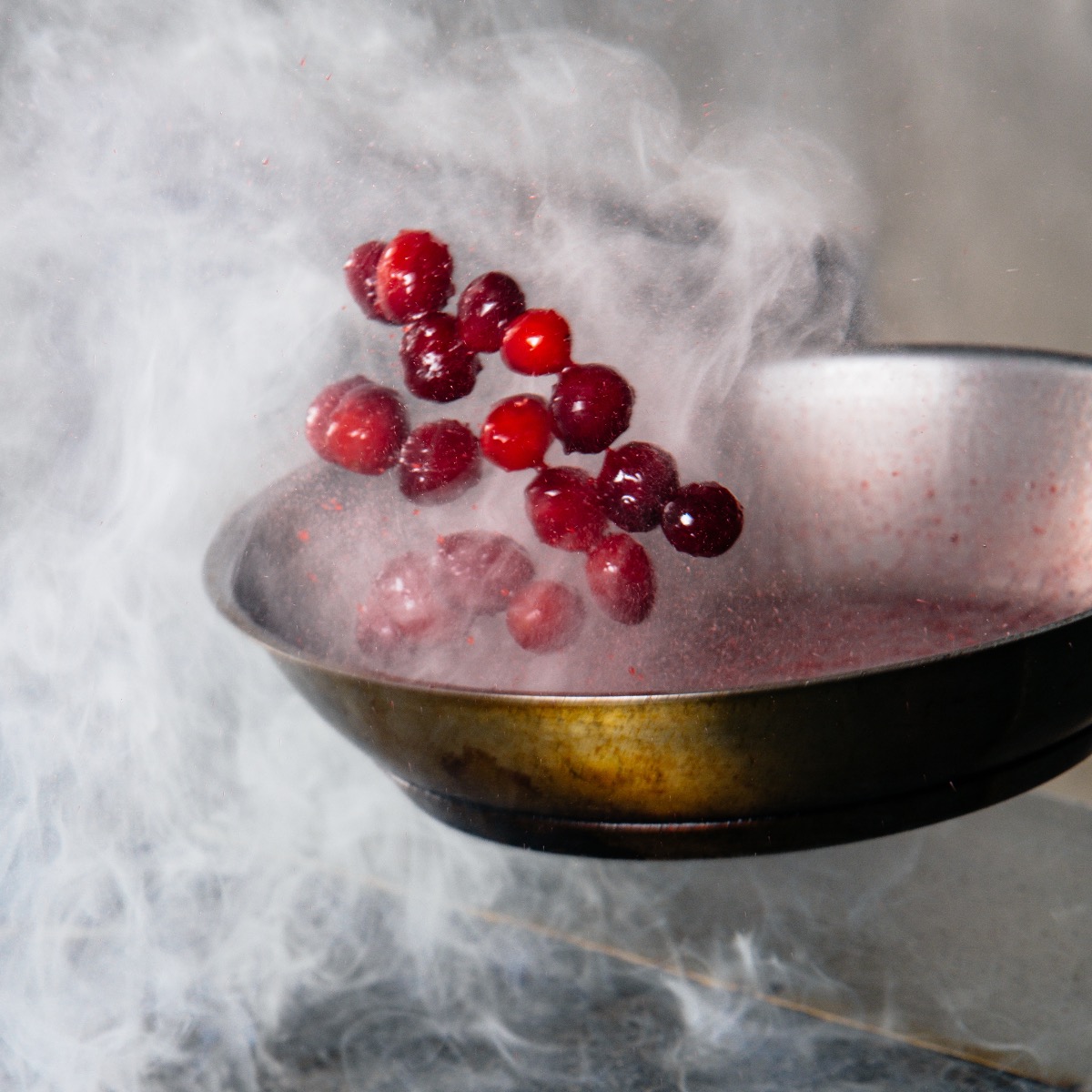
Classic Pan Sauces Vs. Quick Pan Sauces
The difference is simple. A simple pan sauce gets its flavor from deglazing the pan with your liquid(s) once the meat has been removed, reducing the liquids by a least half, and adding butter to thicken and add flavor.
A classic pan sauce will follow the same steps but add more complexity by adding other ingredients throughout the process.
I prefer taking the longer route because adding some shallots or garlic takes less time, maybe another 3 – 4 minutes.
Adding some mushrooms while the sauce reduces doesn’t increase the total cooking time that much, either. But, of course, if you need to speed up the process, you can always decrease the amount of deglazing liquid, which will also decrease the sauce’s richness.
Then there are the nights when I don’t have the time or energy to go the extra distance, so I take some shortcuts and make a quick pan sauce. It still tastes great and is better than no sauce at all.
You can check out Red Wine Pan Sauce for two example recipes for the same sauce, one classic and the other quick.
Making a Simple Pan Sauce, Step by Step
- Sear the meat: Start by searing your protein (such as chicken, beef, or fish) in a skillet or sauté pan over medium-high heat until it’s cooked to your desired level of doneness. This process creates flavorful browned bits, known as fond, on the bottom of the pan.
- Remove the meat: Once the meat is cooked, remove it from the pan and set it aside to rest. Leave any drippings and fond in the pan.
- Add aromatics: Add aromatics such as chopped onions, garlic, or herbs to the pan. Sauté them in the drippings until they are softened and fragrant, usually for about 1-2 minutes.
- Deglaze the pan: Pour a liquid into the pan to deglaze it, loosening the fond from the bottom. Common deglazing liquids include wine (white, red, or fortified), broth (chicken, beef, or vegetable), or even vinegar. Use a wooden spoon or spatula to scrape up any browned bits from the bottom of the pan as the liquid simmers.
- Reduce the liquid: Allow the liquid to simmer and reduce, concentrating its flavors and thickening it slightly. This usually takes a few minutes, depending on the amount of liquid and desired consistency of the sauce.
- Finish the sauce: Remove the pan from the heat once the liquid has reduced to your desired consistency. Optional additions like butter, cream, or mustard can be whisked into the sauce at this point to add richness and depth of flavor. Season the sauce with salt and pepper to taste.
- Serve: Spoon the finished pan sauce over the cooked meat or pour it into a serving dish. Garnish with fresh herbs, if desired, and serve immediately.
Following these steps, you can create a delicious and flavorful pan sauce to complement your favorite dishes. Feel free to customize the sauce by experimenting with different aromatics, liquids, and seasonings to suit your taste preferences.
Variations
Of course, the trick is to use complementary flavors. For example, to make an Italian-inspired pan sauce, you might use a mixture of stock and Chianti, perhaps stir in some tomato paste along with some garlic, flavor it with basil and/or oregano, and finish the sauce with olive oil.
For a French twist, consider adding minced shallot, stirring in some Dijon mustard, using stock and white wine for the deglazing liquid, and flavoring with tarragon, lavender, or Herbes de Provence.
You can make a great sauce with Asian flavors by sautéing fresh ginger and stirring peanut butter in Step 2, flavoring it with five spice powders, and deglazing it with lemony chicken stock. Finally, finish the sauce with some toasted sesame oil.
Remember, a quick pan sauce uses a series of techniques—sauteing, deglazing, reducing, and enriching—and not so much about following a strict recipe.
Pan Sauces
Ingredients
- fond Your saute pan with fond from the protein you cooked that is now resting
- 1 tablespoon shallot or onion, minced
- ¼ cup deglazing liquid such as stock broth or wine
- ¼ cup secondary liquid to balance the deglazing liquid
- 1 tablespoon butter or oil for mouth feel
- complementary herbs minced
Instructions
- While meat is resting, sauté shallot in the fat left in the pan (add a bit of oil if there is no fat)
- With the heat on high, pour in your deglazing liquid and stir up all the fond from the bottom of the pan. Reduce by ½ - this will not take long - watch it carefully.
- Add the balancing liquid* and reduce until thickened and syrupy.
- Taste and adjust seasonings if necessary. You probably won't need salt, but you might want to add some pepper.
- Off the heat, swirl in a splash of heavy cream or a bit of butter. This will give your sauce a lovely gloss and rich mouth feel.
- Strain (if you want to) and add some minced herbs to finish.

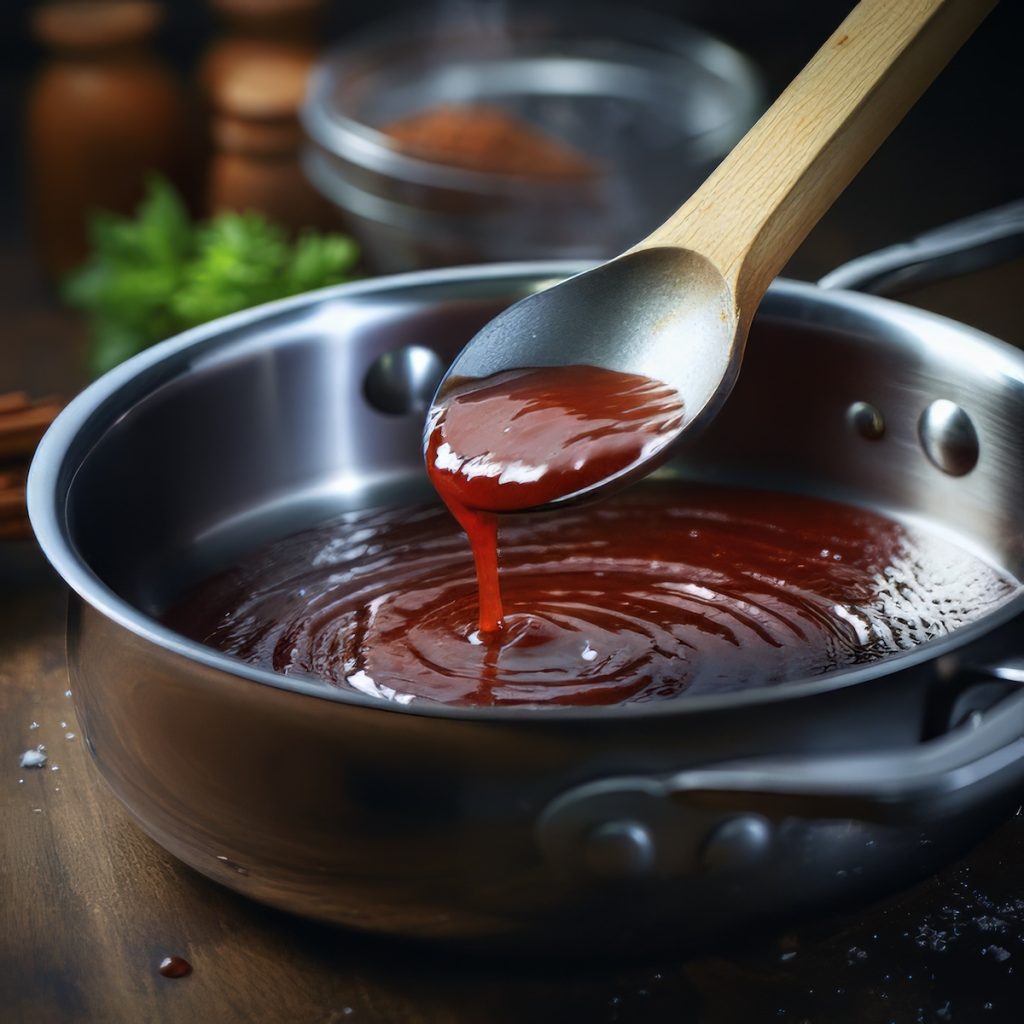
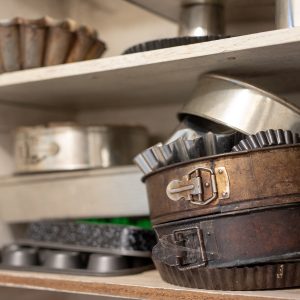

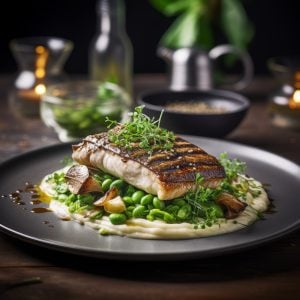
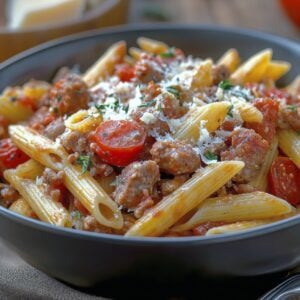
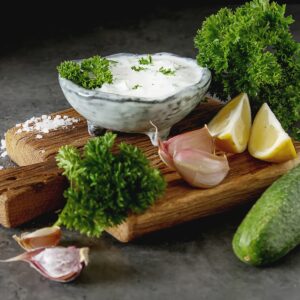
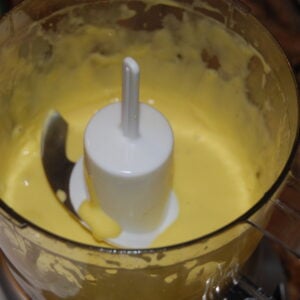
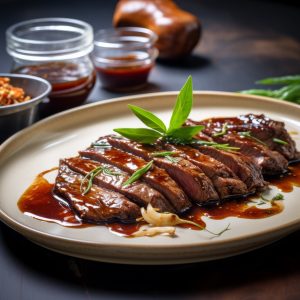
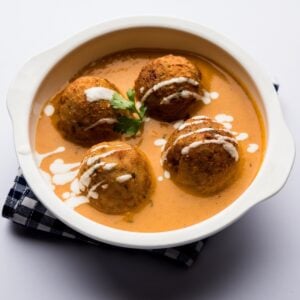
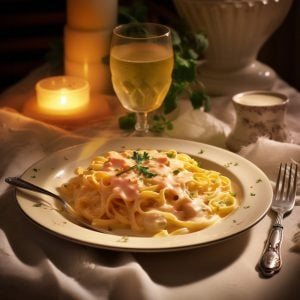
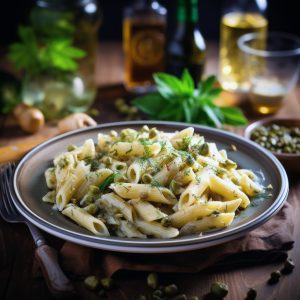


25 Responses
This is a pretty good article!! I know how to make a pan sauce, but the extra variations are helpful… I tend to make the same pan sauce over and over so examples about different additions that can be done at certain times is helpful for me.
This article was beyond helpful.
Thanks!
this is great! i love the site. but you say you use a 10 inch, 3 quart Caphalon sauté pan… the only one i can find online is non stick. does that work too..?
Hi Grant, thanks for your comments. I didn’t mean to suggest you had to use the same pan I do, I was just describing my own pans. Lot’s of people like non stick pans for everything they cook and it’s getting harder and harder to find pans that are not non-stick. For some dishes, I love non-stick but when I’m pan frying meat or chicken, I prefer stainless or my old anodized aluminum pans because it produces “fond” (the meat and “stuff” that sticks to the pan when you fry or saute it) which is what I want for making a pan sauce. With non-stick pans, the meat doesn’t stick to the pan thus no fond is created. When you deglaze the pan, the fond comes right off the pan with a wooden spoon. So yes, you can prepare a pan sauce with any pan but in my opinion, you can prepare a more flavorful sauce with a pan that sticks.
Really like this ‘sauce recipe and variations’. Same. I am needing inspiration. Thanks, I am going to reinvent pan sauces in our menus. Been lazy and been buying them. This is so easy and cheaper and tastes better.
I thank you. My husband REALLY thanks you! A New Year’s resolution to avoid processed and fast foods and focus on fresh is a challenge to my cooking skills. Your advice and simple process is going on my cabinet door for ready reference!
I’m extremely fond of my cast iron for getting a good sear. Could I cook my meat in my cast iron, then deglaze with a stock and pour the results into a sauce pan to reduce? Because you’re right, acidic ingredients will end up tasting metallic if cooked in a cast iron.
Thank you for the article! I decided it’s time I learn how to make a basic pan sauce and found this within a couple of minutes – extraordinarily helpful!
Thanks for the article. I’d been told long ago that the difference between a sauce and a gravy are that a gravy is opaque, and a sauce is translucent. If I understand your article correctly, the difference between a sauce and a gravy is that gravies are thickened with a roux or starch, and a sauce is thickened by fats (cream or butter) or reduction? I can make gravies that are translucent with corn starch, so, If I understand you correctly, it make much better sense now. THANKS! [or is it all a matter of semantics…. gravy/sauce… different names for the same item?]
Hi Kathy, I would say it is more a matter of semantics.
Thank you- I love your articles- love your tips- love the user friendly style you use to instruct. Thank you!
Will you consider adding a Pinterest board for instructions?
Hi Kate, I would. Please contact me directly with what you have in mind.
Excellent article. Thank you.
I, too, am a fan of using a cast iron skillet for searing. What liquids do not react with iron when preparing pan sauces? Which liquids are acidic/alkaline? Thank you!
I have a 10″ Stainless Steel pan with a heavy copper bottom. When searing steak I use Avacado oil, it has a smoke point of 500 f which gives you a really great Fond! That as said is the key to a sauce with a great flavor.
I used a cast iron with chicken broth and a splash of butter and cream and it turned out fabulously.
Great article, thank you! Do you have any recommendations for a fat I could use instead of butter or any form of dairy?
How about trying olive oil?
Holy cow, I feel enlightened. What an article, thank you! I do have a question though: Let’s say I’m cooking steak, or chicken, or any other meat, and I want to saute some onions and garlic and then also have a pan sauce with that. What would be the order for that? Saute the protein, then saute the onions, then make a pan sauce? Would I have to use two pans for that?
Thanks again for the article! I’m looking forward to making my first pan sauce!
Erik, great question. The answer really depends on whom you ask. Every cook seems to have their own technique and I think it often has to do with who taught them. Me, I like to cook the onions and garlic first and push them to the side and cook the protein and then make the sauce. Saying that, I have also cooked the onions and garlic, removed them from the pan, cook the protein, remove that and then make the pan sauce. If you have two pans and you don’t mind cleaning both, you can always prepare the onions & garlic and protein separately but I don’t think it’s necessary.
Fantastic! This is one of the first things my father taught me to do when I was learning to cook. This is the sort of thing that should be taught in school. Cooking is undervalued in UK schools where simple things like this would hugely enhance the quality of life of the students. Great site.
Can I make stock in pressure cooker?
And if I can – will this be good to make
reduction sauce?
Great question Edge and I did not know the answer so I did some research and found a site that compared the traditional slow method, pressure cooker method and slow cooker (crock pot) method and found the pressure cooker and traditional slow cooking methods almost equally tasty. The slow cooker method was less than desirable. You can see all his results at http://bit.ly/1zipU18
So the answer to you question is yes. Will it make a good reduction sauce? If the stock is good, it should be fine for a reduction sauce.
“suc” is related to juice or sap. “sucre” means sugar. They don’t have the same etymology.
Hi Louis, thanks for commenting. I’m sure you have your etymology right but I see the term “sucs” used quite often by professional chefs describing the stuff I usually call fond.